SHARE PRIZE 2012
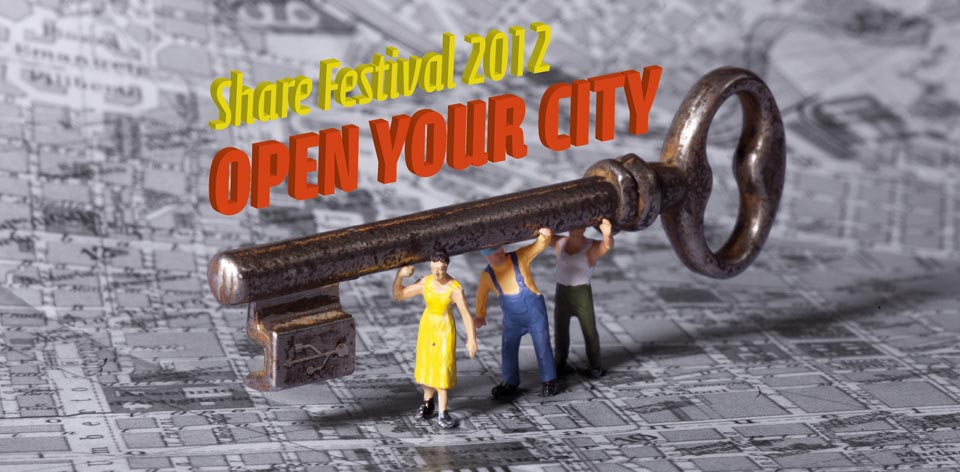
“Open Your City”
Open Your City was the guiding theme for the Share Prize 2012. A theme that contains three key, simple and direct words.
Open is meant in the sense of being in the making, of being unfinished, experimental, transparent and boundless. ‘Open’ gives the idea of a starting point, the perspective from which we see things, an inclusive vision founded on digital communication and active democracy. It is a hallmark of the quality of an idea, a system, a group or an organization. It relinquishes copyright to give precedence to the sharing of knowledge, to open-source methodologies.
Your is meant as the direct participation of people who possess, own, use, occupy and command something that belongs to them. It identifies the person who plays a leading role in driving change-someone who takes action, steps in and gets involved; someone who makes plans, collaborates, transforms, brings together and acts as part of a community. ‘Your’ means grass-roots democracy.
City is meant as the venue or theatre of action; it is the common good, the backdrop to changes underway. An urban space abuzz with social and technological ferment, made up of streets and roads, squares and parks and everyday locations. The city has become populated with new sites of social media where communication flows thick and fast-in the form of control, through video surveillance or the mapping of social graphs, though also in the form of participatory democracy, through augmented reality, smart architectures and wearable computing.
What is the role of art today, in this moment of social transition towards the city of the future? It was from this perspective that the artists interpreted the theme Open Your City, exploring the key concepts word by word.
The short-list of the Jury reflects the reappearing artistic interpretation of the modern urban landscape as system, where the solid element is replaced by the message, the information and the database, a real, but dematerialized city.
Jury Statement
Capacities: Real Time Complex – Connected Cities by British artist Stanza is an installation dedicated to the complexity of life in an environment. Changes in each of the spaces are monitored in real time, as they give rise to constant tensions, highlighting the behaviour of complex systems and the emergent properties that appear. In this case the organism is the city and not the single individual; it is the entire urban habitat as a whole, revealing its nature as a multifaceted system.
The installation is the real-time mirror image of everything that changes, gathering huge amounts of data that are transformed aesthetically into a physical copy of the city, made up of cables, lights and sensors that represent shifts in environmental parameters measured numerically.
The obsessive focus is on the observation of environmental data by gathering measurement on temperature, light, atmospheric pressure, noise and the sounds of the city outside the museum. Gathering digital data on the environment has become an art, and art has become a data set rather than a collection of molecules. The short-list of the Jury reflects the reappearing artistic interpretation of the modern urban landscape as system, where the solid element is replaced by the message, theinformation and the database, a real, but dematerialized city.
For Mark Shepard, the future for city dwellers is so dystopian that we will need a Survival Kit to defend ourselves against what will have become the Sentient City—a city capable of perception by the senses of sight, hearing and touch, that creates a world under control. He chooses the totalitarian political fiction of a world governed by corporations to present the Smart City as a data-sensitive agglomerate. As protection we will wear sensor-laden underwear, our networks will be hidden in travel mugs, and we will shield ourselves from surveillance
In contrast, Jonathan Baldwin sees the city as one big collective game. Using wireless mesh networks, he transforms neighbourhoods into Kenyan-style Ushahidi networks, featuring the pop graphics of “The Sims” video game. TidePools blends crowdsourcing and social activism, drawing the participation of people faced with the same problems and boosting the benefits of living in a neighbourhood. Through what might be called “activist mapping,” he creates a participation tool for the people. Nobody will ever be alone again in dealing with a problem, and solutions will be found by sharing them with the local community and managing them autonomously.
On On Journalism #2 Typewriter is an analogue machine that is activated by a computercontrolled mechanism. Created by Julian Koschwitz, the work combines both a collaborative and a combinational aspect. Written endlessly on an endless piece of paper, the work brings together the stories of all the journalists killed around the world since 1992. The generation, recombination and artistic visualization of the tragic data is guided by web search concerning the person and data provided by the Committee to Protect Journalists, creating an infinite news ream—tomorrow’s newspaper. Can an interactive sculpture represent a map that interacts with web- sms- and social network-sourced data?
SYN is a map of human relations filtered by new media. Mariano Leotta questions the representativeness of these filters, with respect to the real world beyond the web. Are we essentially synapses enabling nerve impulses synced to data packets to be transmitted from one cell to another of a media body?
Completing the Share Prize short-list an activist work from the Berlin-based collective VR/Urban Reclaim the Screens gives us an interaction tool to create our own data and information—an SMSlingshot to reappropriate urban spaces. The work consists of a mobile device inserted into a wooden slingshot. People can fling short text messages onto walls and facades to militantly reclaim the city, empowered by the interactive gestures of keying a message, taking aim with a laser and shooting a colourful splash of light.
The 2012 Share Prize Winner is Capacities: Real Time Complex – Connected Cities.
The jury, represented by Mirjam Struppek, gave the following motivations for its decision:
“The short-list selected by the Jury reflects current artistic practice, revealing an image of our city that seems to be more and more a system ruled by data, information exchange or messages produced by us or our behaviour. Considering criteria such as the formal completeness of the art work, the ability to communicate its message, the bridging of physical and digital realities, the involvement of citizens as creators and the theme Open Your City, the Jury decided to award the Share Prize to the British artist Stanza.
His work Capacities: Real Time Complex – Connected Cities was found to have effectively represented, both aesthetically and, above all, technically, city life in real time, monitoring boroughs of London to show the complexity of an urban location in real time as a system in perpetual mutation.”
The Sentient City Survival Kit by Mark Shepard received an Honorary Mention as it poignantly questions such fashionable concepts as a “Smart City” based on the internet of things and ubiquitous computing. Offering us an artistic survival kit against an over-coded environment, he prepares us for life in a dystopian sentient city.
2012 – Winner
Capacities
Stanza (UK)
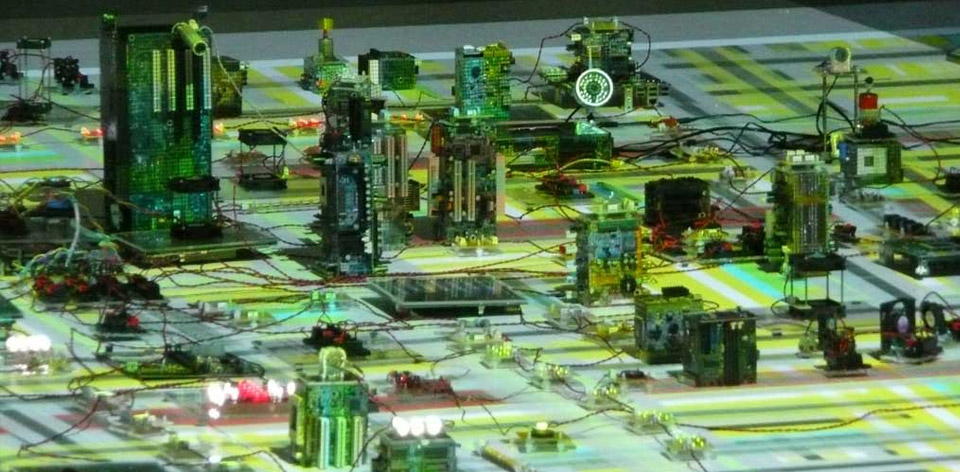
Capacities: Life In The Emergent City captures the changes over time in the environment and represents the changing life and complexity of real-time space as an emergent artwork.”
Capacities goes beyond simple single-user interaction to monitor and survey in real time the whole city and entirely represent the complexities of the real-time space as a shifting, morphing and complex system. What you see is a sculpture representing the emergent properties of the environment in which the sensors network is situated. In this case the city.
This is the art of gathering environmental data. The objective is to explore new ways of thinking about life, emergence and interaction within public space and how this affects the socialization of space. The interactions of all the data are re-formed and re-contextualised in real-time artwork.
2012 – Honorary Mention Winner
The Sentient City Survival Kit
Mark Shepard (USA)
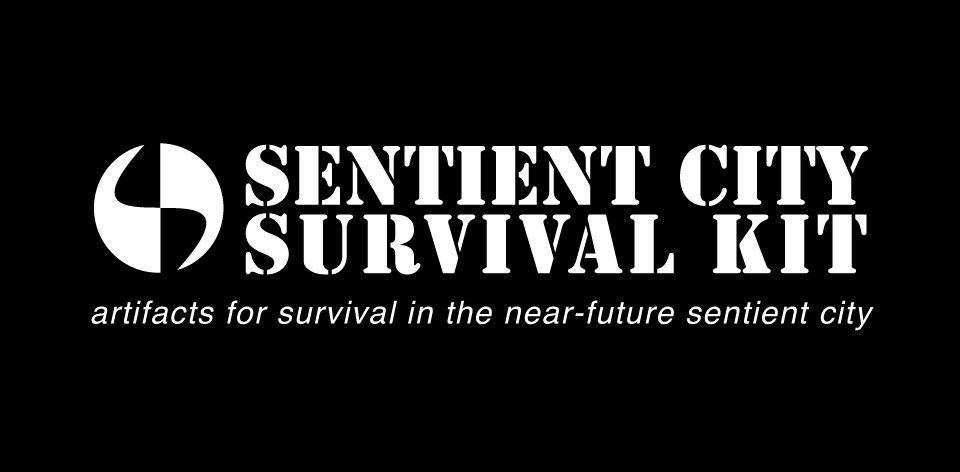
The Sentient City Survival Kit probes the social, cultural and political implications of ubiquitous computing for urban environments.
The project consists of a collection of artefacts for survival in the near-future sentient city. As computing leaves the desktop and spills out onto the sidewalks, streets and public spaces of the city, information processing becomes embedded in and distributed throughout the material fabric of everyday urban space.
Imbued with the capacity to remember, correlate and anticipate, this sentient city is envisioned as being capable of reflexively monitoring our behaviour within it and becoming an active agent in the organization of our daily lives.
The project aims to raise awareness of the implications for privacy, autonomy, trust and serendipity in this highly observant, ever-more efficient and over-coded city.
2012 – Entry Selected #3
Tidepools
Jonathan Baldwin
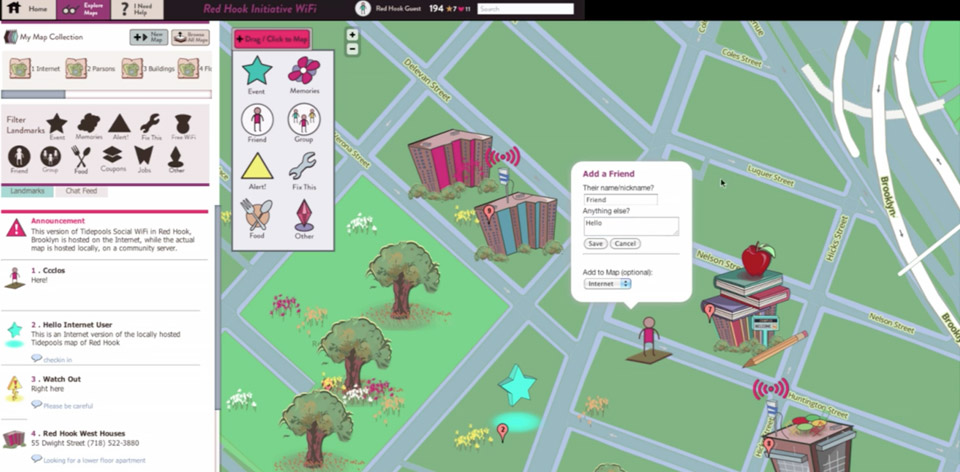
Working with the Red Hook Initiative and Open Technology Institute at NAF, Tidepools is tailoring a re-skinnable collaborative mobile mapping platform for gathering and sharing hyper-local information and culture through expressive, community maps and data feeds, enabling greater connectivity and communication among neighbours and local organizations.
Inspired by local artwork, the Tidepools interface has organically evolved over months of community meetings, brainstorming sessions and feedback with residents from a “shoutbox” anonymous chat feed hosted on the wireless network. Creating and sharing custom maps emerged from the need plot Alerts of where and when police “stop and frisks” were occurring in the neighbourhood.
Bus alerts were motivated by the notoriously late B61 bus, the only transportation in the area, which led to integration with MTA Real Bus Time data. Potholes and broken building signs are being addressed through a local civic reporting tool that can be integrated with Open311.
2012 – Entry Selected #4
On Journalism #2 Typewriter
Julian Koschwitz
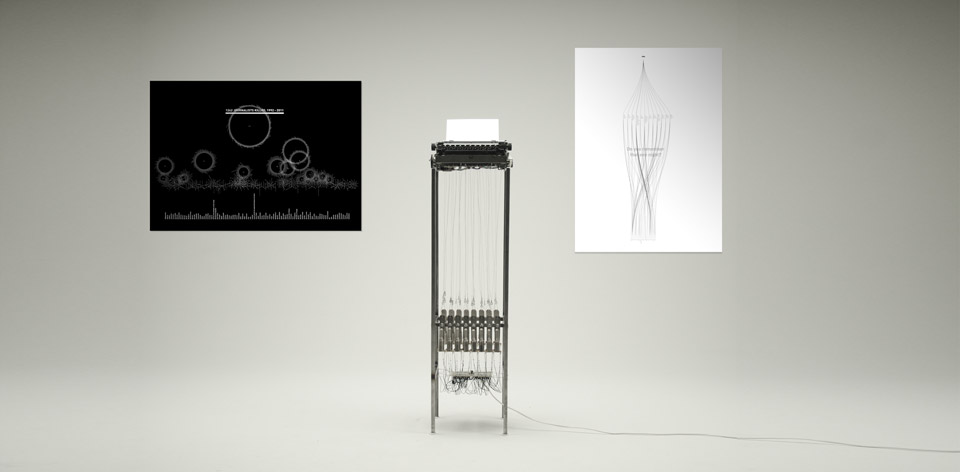
The typewriter installation On Journalism #2 Typewriter writes generatively constructed stories about all the journalists who have been killed worldwide between 1992 and today, based on existing data of their lives as well as their published work.
Each story is always based on a data-set combined with web searches, with country flags distorted in relation to the number of journalists who have been killed in the country.
The software creates information graphics about the statistics in the data-set (e.g. how many have been killed in which country, which professions etc.) to connect them to the individual stories of the journalists.
2012 – Entry Selected #5
SYN
Mariano Leotta
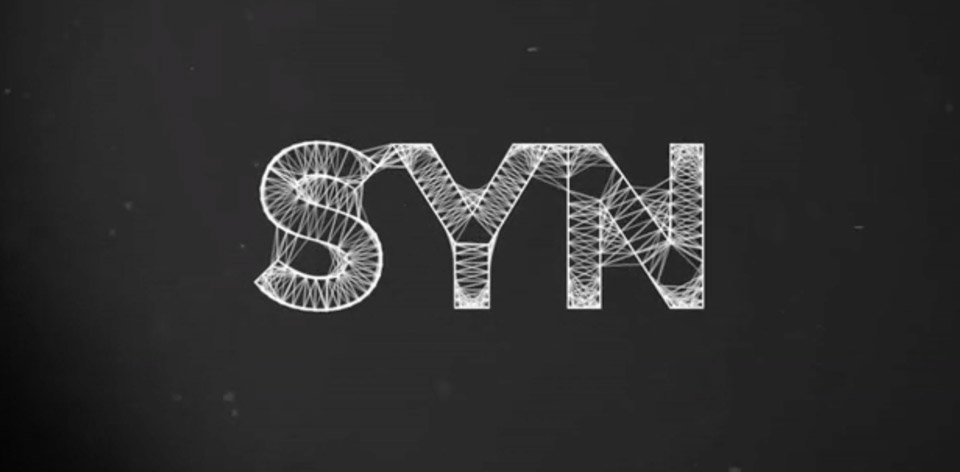
SYN is a synchronization request packet on the Internet.
SYN means “together” in ancient Greek. SYN is the synapsis. Through synapses, neurons exchange information in the form of chemical-electrical impulses with other neurons within a neural network managed by the brain.
In contemporary society, social impulses do not just come from physical relationships, but increasingly from virtual ones. SYN seeks to spur city dwellers and travellers to explore and feed the creative side of the city through a crowd-sourced process.
The SYN installation represents an artificial neural system with a constant exchange of electrical impulses. It represents a video mapping process activated by topic-related tweets on Twitter and audience web-interaction. Using a mobile device, anybody can send a spark, a creative contribution that will activate the installation and can be visualized on the dedicated web app.
2012 – Entry Selected #6
SMSlingshot
VR/Urban
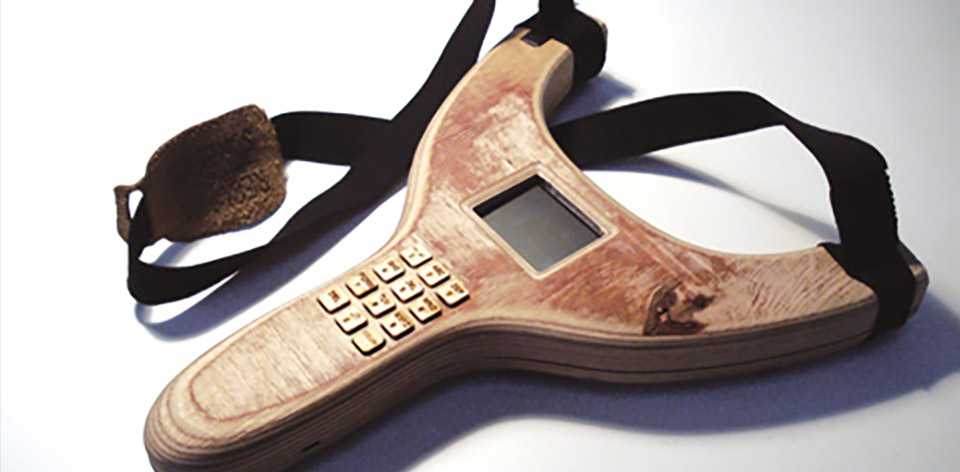
The concept behind VR/Urban’s work is to claim back urban space and give locals a tool for occupying urban screens.
People cannot remain merely a passive audience; they have the right to create, and to obtain the tools to create, their own multimedia content in the streets.
SMSlingshot is an autonomous working device equipped with an ultra-high frequency radio, hacked Arduino board, laser and batteries. Text messages can be typed on a phone-sized wooden keypad which is integrated into the wooden slingshot. Once the message is finished, the user can take aim at a media facade and send/shoot the message straight to the targeted point. It will then appear as a coloured splash with the written words. The text message will also be real-time twittered—just in case.